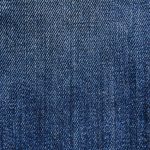So, you're on the hunt for the perfect fabric, one that effortlessly combines comfort, style, and durability. Look no further, as we delve into the showdown between jersey and pique.
Both fabrics offer unique qualities that cater to your discerning taste. From the soft, stretchy embrace of jersey to the textured, breathable nature of pique, each fabric brings its A-game.
Whether you're aiming for a casual, laid-back vibe or a more refined, structured look, understanding the nuances of these fabrics will elevate your mastery of garment selection.
Get ready to weigh the pros and cons, and ultimately discover which fabric triumphs in the battle of jersey versus pique.
Key Takeaways
- Jersey fabric is a knit fabric with a smooth, flat face on one side and a textured back, while pique fabric is a textured knit fabric with a waffle or honeycomb-like appearance.
- Jersey fabric has excellent drape and flexibility, making it popular for activewear and casual clothing, while pique fabric offers great moisture-wicking properties, making it suitable for sportswear and warm-weather garments.
- Jersey fabric is more moisture-wicking, drawing sweat away from the body, while pique fabric's textured construction facilitates air circulation, aiding in temperature control and breathability.
- Jersey fabric is versatile and suitable for t-shirts, dresses, and activewear, while pique fabric is more suitable for polo shirts, blazers, and sportswear.
Fabric Characteristics and Qualities
When choosing between jersey and pique, you'll find that each fabric has its own unique characteristics and qualities to consider. Fabric construction plays a significant role in determining the performance of these materials.
Jersey is a knit fabric with a smooth, flat face on one side and a textured back, created by knitting together multiple yarns. This construction gives jersey a stretchy quality, making it comfortable and form-fitting.
On the other hand, pique is a textured knit fabric with a waffle or honeycomb-like appearance. The weaving process creates a breathable and durable fabric that has a slightly more structured feel compared to jersey.
In terms of performance comparison, jersey is known for its excellent drape and flexibility, making it a popular choice for activewear and casual clothing. Its stretchy nature allows for ease of movement and ensures a comfortable fit.
Pique, with its textured surface and breathable design, offers great moisture-wicking properties, making it suitable for sportswear and warm-weather garments.
Understanding the fabric construction and performance attributes of jersey and pique can help you make an informed decision based on your specific needs and preferences.
Comfort and Breathability
As you consider the choice between jersey and pique fabrics, it's important to assess their comfort and breathability for your specific needs. Both fabrics offer distinct advantages in terms of comfort and breathability, making it essential to understand how each fabric performs in these areas.
Comfort is a key factor when choosing between jersey and pique fabrics. Jersey fabric is known for its soft, stretchy feel against the skin, providing a comfortable wearing experience. On the other hand, pique fabric offers a textured surface that enhances airflow, promoting a comfortable and breathable feel.
Moisture-wicking properties are crucial for breathability. Jersey fabric tends to be more moisture-wicking, drawing sweat away from the body and allowing it to evaporate quickly. Conversely, pique fabric's textured construction facilitates air circulation, aiding in temperature control and breathability.
Temperature control is another aspect to consider. Jersey fabric, with its smooth and lightweight nature, is ideal for warmer conditions, while pique fabric's textured weave provides enhanced breathability, making it suitable for a range of temperatures.
Understanding these factors can help you make an informed decision based on your specific comfort and breathability requirements.
Versatility and Ideal Uses
Are you wondering which fabric, jersey or pique, is more versatile and ideal for different uses? Let's compare their versatility and analyze their ideal uses.
Jersey fabric, known for its stretch and softness, is incredibly versatile. It drapes well, making it suitable for a wide range of clothing such as t-shirts, dresses, and activewear. Its flexibility also makes it comfortable for everyday wear.
On the other hand, pique fabric, with its textured weave, offers a more structured and durable feel. This makes it ideal for creating polo shirts, casual blazers, and sportswear. The texture of pique fabric gives it a more formal appearance, making it suitable for business casual attire.
While jersey is perfect for creating comfortable, form-fitting garments, pique is better suited for structured, tailored pieces. When it comes to ideal uses, jersey is perfect for casual, everyday wear, while pique is a great choice for more polished and structured clothing.
Understanding the versatility comparison and ideal uses of these fabrics can help you make informed decisions when selecting the right fabric for your specific garment or project.
Durability and Maintenance
To assess the durability and maintenance of jersey and pique fabrics, consider their respective qualities and care requirements. Both jersey and pique fabrics are known for their durability, but they've different maintenance needs.
Jersey fabric is durable and can withstand regular wear and tear, making it ideal for everyday use. On the other hand, pique fabric is also durable, but its unique textured weave can make it more prone to snagging, requiring a bit more care during wear and washing.
When it comes to maintenance, here are some key points to keep in mind:
- Durability: Both jersey and pique fabrics are durable, but jersey may be more resistant to snags and tears due to its smooth, flat surface.
- Washing Instructions: Jersey fabric is typically machine washable and can withstand frequent laundering without losing its shape or color. Pique fabric, on the other hand, may require more delicate care, such as gentle cycle washing and air drying, to maintain its texture and appearance.
- Overall Care: While both fabrics are durable, pique may require a bit more attention during washing and storage to preserve its unique texture and prevent snags.
Understanding the specific care requirements for jersey and pique fabrics can help you maintain their durability and appearance for the long term.
Style and Aesthetic Appeal
When considering the style and aesthetic appeal of jersey and pique fabrics, their distinct textures play a significant role in defining their visual impact and versatility.
Jersey fabric, known for its smooth and stretchy nature, offers a sleek and modern aesthetic. It drapes beautifully, making it a popular choice for casual, form-fitting garments.
Pique, on the other hand, with its textured and woven appearance, exudes a more structured and refined look. The unique texture of pique fabric adds depth and interest to garments, making it a great option for both casual and semi-formal attire.
Color options also greatly influence the style and aesthetic appeal of these fabrics. Jersey fabric is often available in a wide range of colors, making it versatile and suitable for various styles and preferences. Pique fabric, while also offering diverse color options, tends to lend itself well to classic and preppy styles, thanks to its textured surface.
Both jersey and pique fabrics bring their own unique textures and drape to the table, allowing for different style possibilities and aesthetic outcomes. Whether you prefer the smooth versatility of jersey or the textured refinement of pique, each fabric offers distinct visual appeal to elevate your wardrobe.
Frequently Asked Questions
Are There Any Specific Environmental or Sustainability Considerations to Keep in Mind When Choosing Between Jersey and Pique Fabric?
When choosing between jersey and pique fabric, it's crucial to consider their environmental impact and sustainability considerations. Both fabrics have different production processes, resource usage, and potential for recycling, so be mindful of these factors.
How Do Jersey and Pique Fabrics Compare in Terms of Their Ability to Resist Stains and Odors?
When comparing jersey and pique fabrics, you'll find that both offer good stain resistance. However, pique fabric tends to have better odor control due to its textured weave, making it a great choice for staying fresh all day.
Can Jersey and Pique Fabrics Be Easily Altered or Tailored to Fit Different Body Types or Preferences?
When tailoring options and comfort preferences are key, both jersey and pique fabrics offer versatility. Their unique textures and stretch properties make them easily alterable to fit different body types or style preferences.
Are There Any Cultural or Historical Associations With Jersey or Pique Fabrics That Could Impact Their Use or Desirability?
Cultural influences and historical significance can impact the desirability of jersey and pique fabrics. Understanding these associations can provide insight into the use and preference for these materials in different contexts and time periods.
Do Jersey and Pique Fabrics Have Any Specific Care Instructions or Recommendations for Maintaining Their Quality Over Time?
To maintain the quality of jersey and pique fabrics, follow specific care instructions such as washing in cold water and avoiding harsh detergents. Hang dry to prevent shrinking and maintain the fabric's longevity.
- Wholesale Kevlar Carbon Fiber Fabric: Cost-Effective Bidding - June 21, 2025
- Wholesale Carbon/Kevlar Color Fabric: Bulk Sourcing Guide - June 21, 2025
- Kevlar Fabric Suppliers in Toronto: Finding the Best Deals - June 21, 2025







